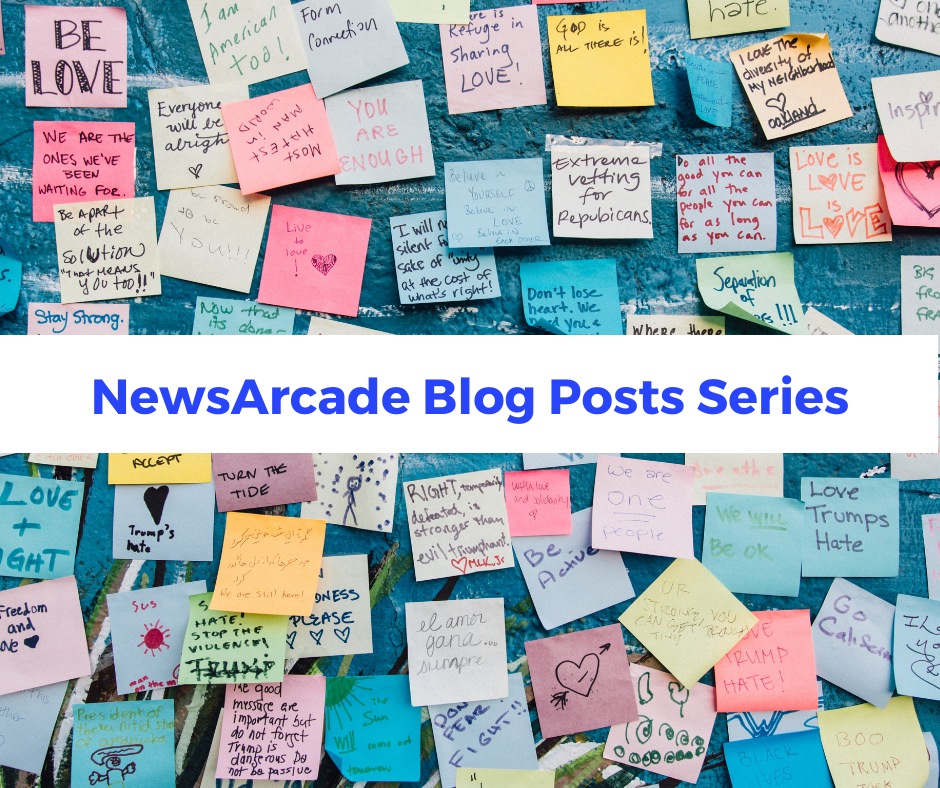Wanting to understand more in depth the types of news consumers that exist we recently conducted a quiz probing individuals on their media habits. This quiz was conducted in both English and Dutch. Drawing inspiration from a Reuters report that explored young people’s relationships with news across the globe, our quiz aimed to shed light on the distinctive ways in which locals navigate the vast landscape of news.
The Reuters report highlighted five key findings, providing a nuanced perspective on how young people perceive and engage with news:
- The Broad and the Narrow: Young individuals categorize news as either ‘narrow’ or ‘broad.’ ‘The news’ is seen as the traditional political agenda, while ‘news’ encompasses a wider spectrum, including sports, entertainment, and science. Alternative media is perceived as more successful in presenting broader content.
- Selective News Consumption: Some young people actively avoid ‘narrow’ and ‘serious’ news, often to safeguard their mental well-being. This selective avoidance poses challenges for mainstream brands, especially those perceived as operating primarily at the serious end of the spectrum.
- Diverse News Consumer Typology: The report identified three distinct groups—Hobbyists/Dutiful, Main Eventers, and the Disengaged. Each group exhibits unique motivations, habits, and content preferences, offering a kaleidoscope of news behaviors within the young demographic.
- Skepticism towards Mainstream News: Young people, raised in the digital age, harbor skepticism towards information sources and often question the ‘agenda’ of news purveyors. Impartiality is a key criterion in judging mainstream news brands.
- Diverse Format Preferences: Contrary to common assumptions, there is little consistency in what young people prefer in terms of news format. Text, video, audio, and still imagery all find their place in the diverse media landscape, emphasizing the importance of catering to individual tastes.
WIth these insights, we crafted our quiz to resonate with local audiences, challenging them to reflect on their news consumption habits. The questions were carefully designed to align with the three identified profiles—Hobbyists, Main Eventers, and Minimalists.
The Hobbyist engages with news continuously for enjoyment or civic duty, actively seeking diverse perspectives through social and web search, apps, and customized aggregation. Their brand consideration is broad, actively exploring various sources, both mainstream and alternative. Main Eventers, primarily focused on the practical impact of news on daily life, have sporadic and event-driven engagement. They use a mix of active seeking and ambient relationships with news, relying on a small set of go-to mainstream sources and aggregation tools. The Minimalist generally avoids news but engages occasionally due to unavoidable ‘big’ events or FOMO (Fear Of Missing Out), relying on word-of-mouth or ambient social media consumption. Their brand consideration is limited, depending on a small set of go-to mainstream sources or whatever search delivers during event-driven engagement.
This is how the participants identified themselves:
- Why Do You Read the News?
- Hobbyist: To know what is happening in the world and to be part of conversations. (64.9% Dutch, 64.4% English)
- Main Eventer: To keep up with developments that impact my daily life. (20.3% Dutch, 15.6% English)
- Minimalist: I don’t actively follow the news. (14.9% Dutch, 20% English)
- How Much Do You Engage with the News?
- Hobbyist: A lot! I search for news stories myself frequently. (45.9% Dutch, 28.9% English)
- Main Eventer: Well, that depends. I search sporadically for specific news and choose stories that appeal to my interest. (41.9% Dutch, 48.9% English)
- Minimalist: I avoid the news most of the time and sometimes search for information when big things are happening. (12.2% Dutch, 22.2% English)
- How Do You Encounter the News?
- Hobbyist: I actively search for news on different channels and platforms. (54.1% Dutch, 35.6% English)
- Main Eventer: Sometimes I actively search for news, but most of the time, news stories find me on social media. (33.8% Dutch, 46.7% English)
- Minimalist: I experience the news through word-of-mouth or ambient consumption on social media. When there’s a significant event, I turn to search engines and news aggregators. (12.2% Dutch, 17.8% English)
- How Do You Choose News Outlets?
- Hobbyist: I actively seek out various sources and aim to diversify perspectives. (28.4% Dutch, 37.9% English)
- Main Eventer: I usually read a small set of go-to sources that I am familiar with. (45.9% Dutch, 35.6% English)
- Minimalist: I usually read a small set of go-to sources or whatever pops up while searching for certain topics. (25.7% Dutch, 26.7% English)
The results provide a fascinating glimpse into the diverse news consumption habits of the local population, showcasing a rich tapestry of preferences. As we navigate the evolving media landscape, recognizing and understanding these nuances opens up new opportunities for news organizations to tailor their offerings and better connect with their audiences. The journey to deciphering local news styles continues, and with each similar study, we unveil a little more about the intricate relationship between people and the ever-evolving world of news.

